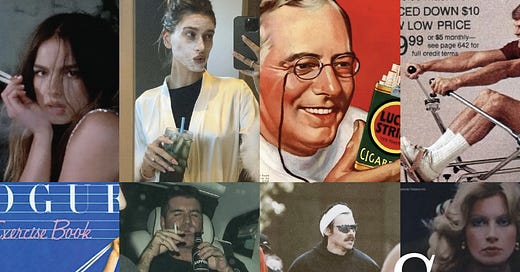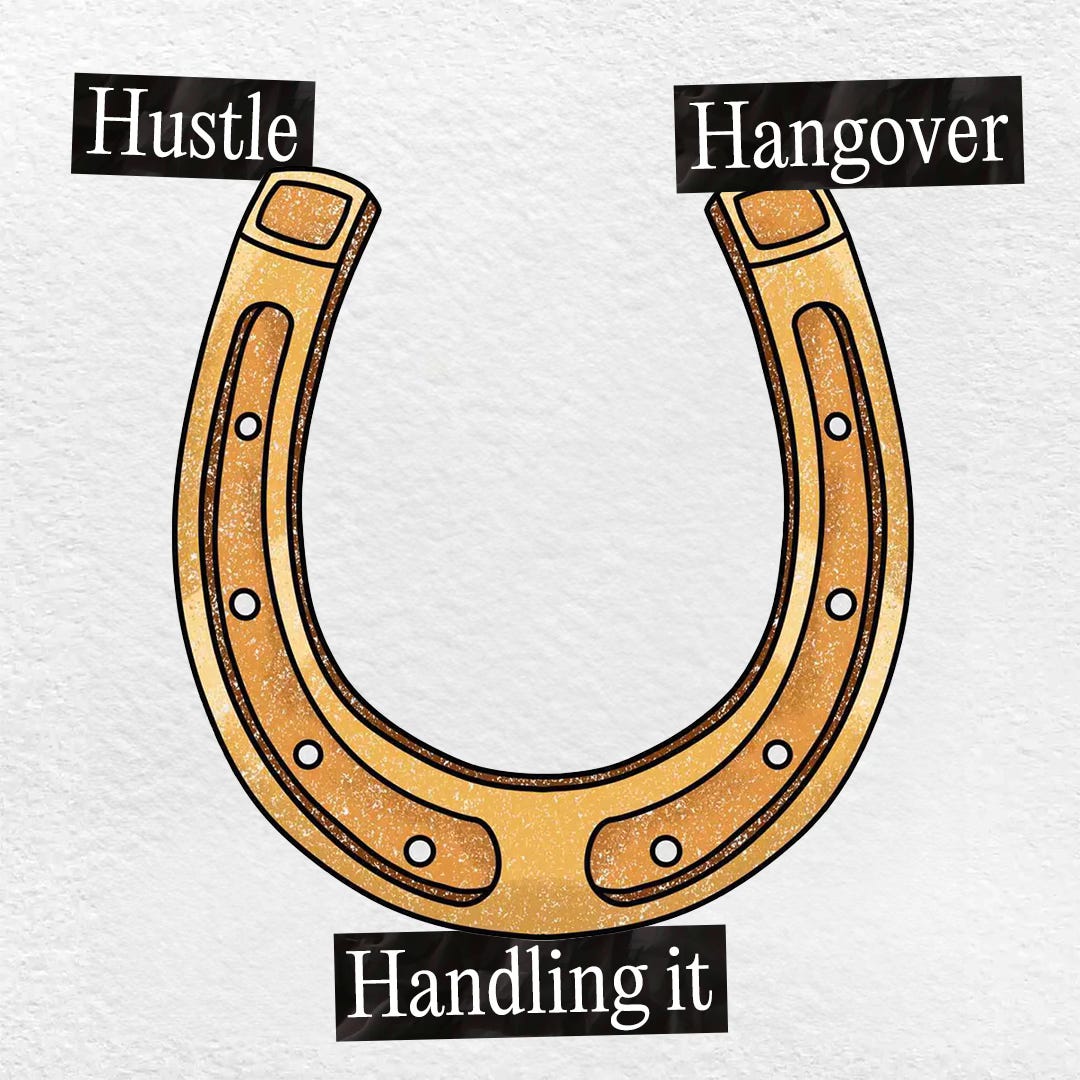Link Lariat: The Hustle-Hangover Horseshoe
Meditation and Marlboro look like opposites, but both sell the same dream.
TUESDAY TUESDAY TUESDAY!!! Sit back and give the edge of your seat a break because the wait is over — Link Lariat is back. I’m Ryan, here again to question “haw yee?” in a world where many simply exclaim “yeehaw.” This week, we’re wrangling wellness. Saddle up!
It’s the summer, which means everyone’s hitting the streets, SoulCycles, and [solidcores] as they frantically prepare for their fast-approaching Instagram beach dumps and fall marathons. As we shed our layers and accept that climbing temperatures mean we must be perceived by others, we find ourselves face-to-face with a terrifying landscape of fitness that is increasingly driven by competition rather than actual wellness.
On the flip side, as the sun shines brighter by the day, so do the club lights and lighter flares at night. Summertime is party time, and everyone needs to prove that they fought through sleepless nights and panic attacks for a bender that’s better than the rest.
Whether it’s being hyperfit or hyperhedonistic, why do these mindset groups feel somewhat…similar? Well, according to our latest Lariat Logic Framework, it’s because they are. I present to you: The Hustle-Hangover Horseshoe, a theory posing that these two seemingly opposite extremes of the spectrum actually curve back toward each other in similarity.
How can this be so? What are these similarities? Let’s get to the links.
1. Both groups are obsessed with their public-facing identity.
Whether it’s green juice or goblin mode, both sides are deeply engaged in the performance of identity. The primary stage is social media, and the goal is to create a legible, consistent "self" for public consumption: girlboss, sham Strava superstar, cigarette celebrity, brat club rat, etc. The act of documenting and sharing is central to the identity itself. It’s performing, not being.
2. Both groups consistently participate in a commodified state of being (maybe even without realizing it).
From athleisure to anxiety aesthetic, you can, quite literally, buy your way into either tribe. With wellness it’s obvious: a growing two-trillion dollar industry stretching from nutrition to beauty to getaway retreats lets you broadcast an appearance of health . But it’s apparent on the flipside as well, from the "Unwell Network’s" aptly-named podcasts and beverages to the rise of “fridge cigs” that let you flaunt chaos with just as much intention.
3. Both groups long to find shared community.
Whether it’s Ironman or Ibiza, the goal is the same: to be understood and validated by a group. We join run clubs and workout communities or we take to TikTok to share (yet sometimes aestheticize) our mental health struggles. By adopting the specific rituals and language of a community, our state of being is now a signal of belonging.
The So What
Wellness and wildness may appear to sit on opposite ends of the spectrum, but in today’s culture of performance, both are carefully curated identities — and brands are often cast as props in that performance. The easy route is to sell people tools that help them look like they belong to one of the tribes. The harder (and more durable) route? Offer them something that resonates with who they actually are when they’re not posting. That means telling brand stories that speak to the subtleties of private lives, not just the generalities of public personas.
The more we chase the aesthetics of a performed self, the more our character starts to flatten into a caricature. The space for individuality shrinks, and the sameness creeps in. To create space for individuality, brands have a real opportunity: show up in the moments beneath the curated surface and tell those stories. (What happens to Lululemon leggings after the pilates mirror selfie? The Liquid I.V. when there’s no weekend bender in sight?) That’s where brands can be more than accessories to a vibe — they can be part of someone’s actual life.
✉️ If you haven’t yet subscribed, click the link below so you don’t miss a thing.






